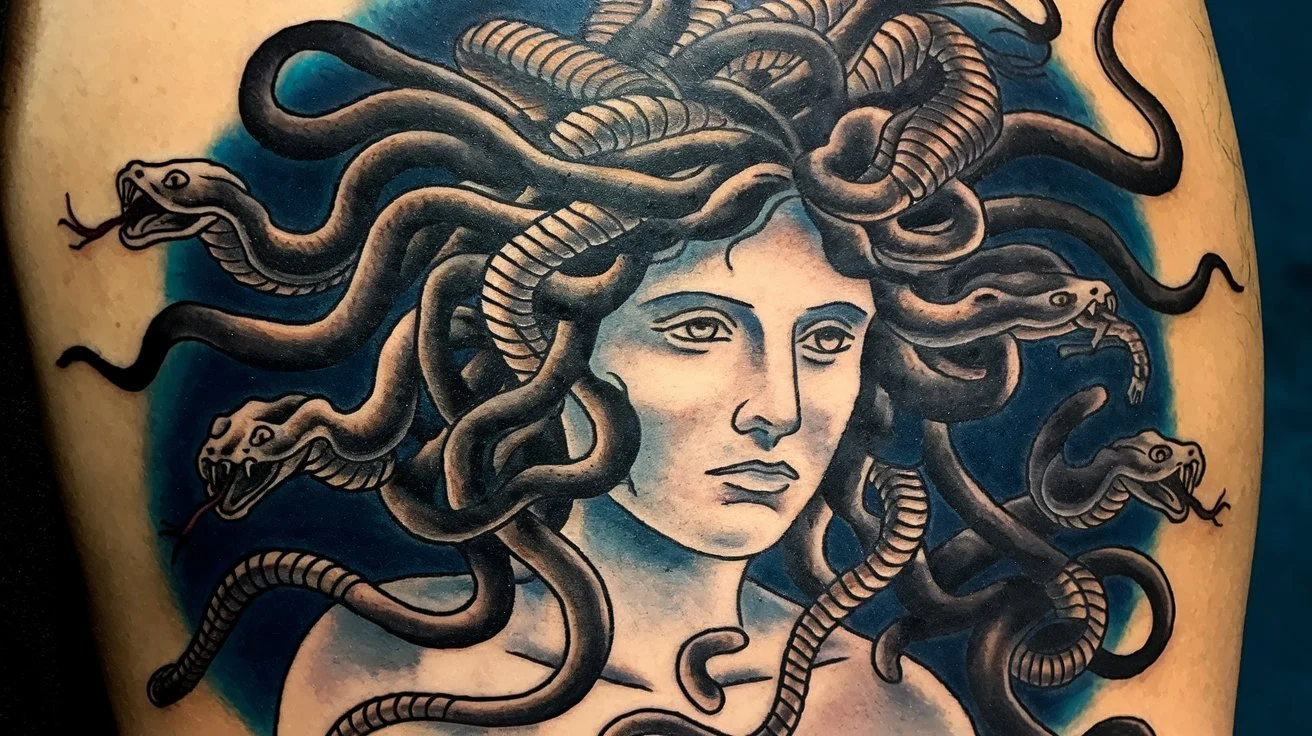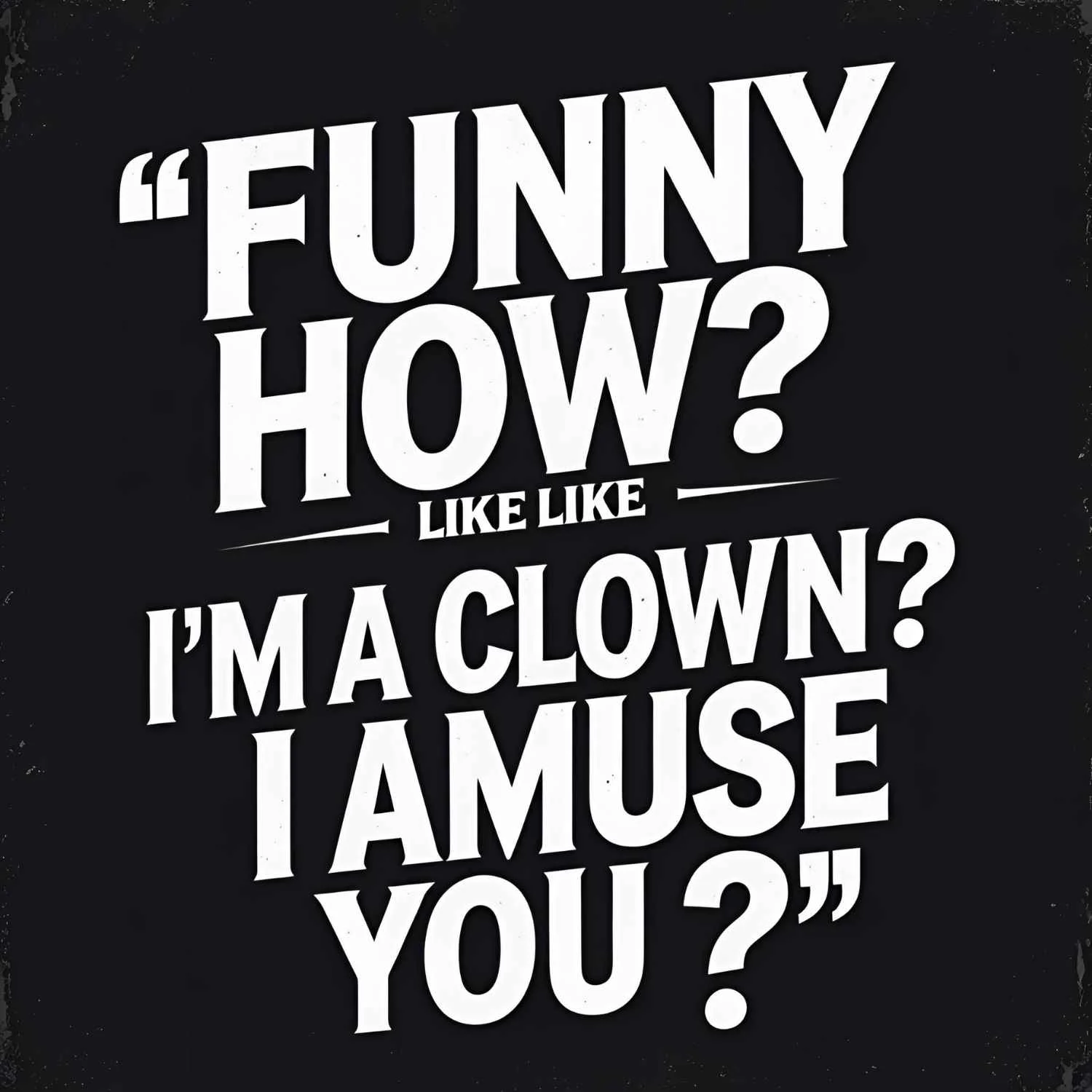In the ever-evolving world of tattoo art, the Medusa tattoo stands out as one of the most compelling and enigmatic symbols. Striking in visual detail and rich in meaning, this mythological figure has transformed from a terrifying monster to a powerful emblem of resilience, transformation, and feminine power.
Introduction: The Mystery Behind Medusa

But what exactly does a Medusa tattoo stand for in 2025? How have its meanings evolved, and how do different people interpret it today? This article dives deep into the mythological roots, explores modern interpretations, analyzes emerging trends, and even provides advanced linguistic alternatives to express what it symbolizes — beyond the overused phrase “stand for.”
Whether you’re considering getting inked with Medusa yourself or you’re curious about the growing cultural fascination, this guide provides a comprehensive understanding of the Medusa tattoo, with fresh insights you won’t find anywhere else.
1. Mythological Origins: Who Was Medusa?
Medusa is a figure from ancient Greek mythology, often described as a Gorgon, a creature with snakes for hair whose gaze could turn people to stone. According to the most popular myth, Medusa was once a beautiful maiden who was violated by Poseidon in Athena’s temple. In response, the goddess Athena cursed her, transforming her into a monster.
This tale, retold and reinterpreted across centuries, lies at the heart of what the Medusa tattoo means today. It’s a story of betrayal, injustice, and transformation—and ultimately, a reclamation of power.
2. Modern Symbolism: What the Medusa Tattoo Means Today

In 2025, the Medusa tattoo no longer solely represents monstrosity or fear. Instead, it’s embraced for its deep symbolic versatility:
🔹 Empowerment After Trauma
Many women have chosen the Medusa tattoo as a symbol of survival and strength after sexual assault or traumatic experiences. Medusa becomes an emblem of turning pain into power—of staring back at the world with defiance and resilience.
“She’s not a monster. She’s a warning.”
🔹 Feminist Iconography
Medusa has become a feminist symbol, representing how women are often demonized for asserting themselves. The myth serves as a metaphor for the way victims are blamed, and how reclaiming one’s narrative is an act of radical strength.
🔹 Transformation & Protection
In some cultures, the image of Medusa is used as a protective talisman, warding off evil—known as an apotropaic symbol. Her petrifying gaze is seen not as a curse, but as a shield.
🔹 Duality and Complexity
The Medusa tattoo represents the duality of beauty and danger, the intersection of victim and villain, softness and strength. It’s a powerful visual metaphor for embracing all facets of one’s identity.
3. Medusa Tattoo Trends in 2025
Tattoo artists and studios in 2025 are reporting a surge in mythological symbolism—and Medusa leads the way.
🔥 Key Observations from Tattoo Artists:
- Placement: Forearms, thighs, upper backs, and sternums are the most popular locations.
- Styles: There’s a rise in realistic black-and-grey portraits and neotraditional colored Medusas, often integrated with floral or snake motifs.
- Demographics: The trend is especially prominent among Gen Z women and queer communities, using the design to assert control over their own narratives.
🎯 Noteworthy Trend:
As of Q2 2025, over 28% of custom tattoo requests involving mythology in U.S. studios include Medusa in some form.
This signals that people are not just getting tattoos for art — they’re using them as personal manifestos.
4. Linguistic Focus: What Does “Stand For” Actually Mean?
When people say, “This tattoo stands for…”, they often mean:
- It represents something emotionally significant.
- It symbolizes a life experience, belief, or personal truth.
- It communicates a story without words.
But the phrase “stand for” is overused and lacks nuance. That’s why we’ve created a list of 10 polished and expressive alternatives that elevate your writing or conversation, especially when discussing tattoos or symbolism.
5. 10 Advanced Alternatives to “Stand For” (With Examples)
Here are ten refined, context-sensitive substitutes for “stand for,” with examples showing how to use them effectively:
🔹 1. Represents
Tone: Neutral/Professional
Example:
“To her, the Medusa tattoo represents survival and empowerment.”
🔹 2. Symbolizes
Tone: Academic/Reflective
Example:
“The inked Medusa on his forearm symbolizes the duality of strength and vulnerability.”
🔹 3. Embodies
Tone: Formal/Poetic
Example:
“This tattoo embodies her transformation from victim to warrior.”
🔹 4. Reflects
Tone: Casual/Conversational
Example:
“It reflects a part of her identity that few get to see.”
🔹 5. Signifies
Tone: Academic/Spiritual
Example:
“For many, Medusa signifies rebirth through adversity.”
🔹 6. Denotes
Tone: Scholarly/Technical
Example:
“In some circles, a Medusa tattoo denotes one’s opposition to patriarchal narratives.”
🔹 7. Expresses
Tone: Creative/Personal
Example:
“This piece expresses her silent rage and healing.”
🔹 8. Echoes
Tone: Poetic/Emotional
Example:
“Her tattoo echoes the ancient cries of misunderstood women.”
🔹 9. Resonates With
Tone: Empathetic/Contextual
Example:
“The symbolism of Medusa resonates with survivors who reclaim their stories.”
🔹 10. Articulates
Tone: Professional/Precise
Example:
“This design articulates her journey of transformation without saying a word.”
6. Choosing the Right Phrase Based on Context and Tone
Choosing the correct phrase depends on audience, tone, and purpose. Here’s a quick guide:
| Context | Best Alternatives |
|---|---|
| Formal writing or essays | Symbolizes, Denotes, Embodies |
| Social media captions | Represents, Reflects, Expresses |
| Artistic discussions | Echoes, Embodies, Resonates With |
| Advocacy or personal storytelling | Articulates, Symbolizes, Signifies |
Using a more precise term than “stand for” deepens the emotional impact and helps the audience connect with your story more vividly.
7. Variations of Medusa Tattoos & Their Meanings
Here are a few popular Medusa tattoo variations and what they often express:
- Blindfolded Medusa: Justice, resistance, silenced power
- Crying Medusa: Sorrow, trauma, emotional depth
- Floral Medusa: Rebirth, beauty within destruction
- Snakes intertwined with flowers: Transformation and fertility
- Medusa with a mirror: Self-reflection, truth, reality vs illusion
Each version personalizes the myth, letting individuals tell their version of the Medusa story through ink.
8. Misconceptions About the Medusa Tattoo
Despite its popularity, the Medusa tattoo is still misunderstood by many:
- Myth: It’s always a symbol of evil.
Reality: For many, it’s a powerful reclamation of agency. - Myth: Only women wear it.
Reality: All genders use it as a symbol of resilience and resistance. - Myth: It’s only about beauty or danger.
Reality: It’s about complex humanity — the spectrum between.
9. Is the Medusa Tattoo Right for You?
Ask yourself:
- Do you feel drawn to mythology and symbolism?
- Have you undergone a major personal transformation?
- Do you connect with themes of protection, healing, or reclaiming power?
If the answer is yes, the Medusa tattoo may not just be a design — it may be a declaration.
10. Final Thoughts: A Symbol of Timeless Power
In 2025, the Medusa tattoo continues to evolve, inspire, and protect. It’s not just ink on skin — it’s a manifestation of strength, a symbol of emotional armor, and a voice for the voiceless.
As art, myth, and language intertwine, understanding what your tattoo represents—or embodies, expresses, or symbolizes—gives your story even more power.
So the next time someone asks, “What does your Medusa tattoo stand for?”
You’ll have ten better answers—and a story that will leave them speechless.





